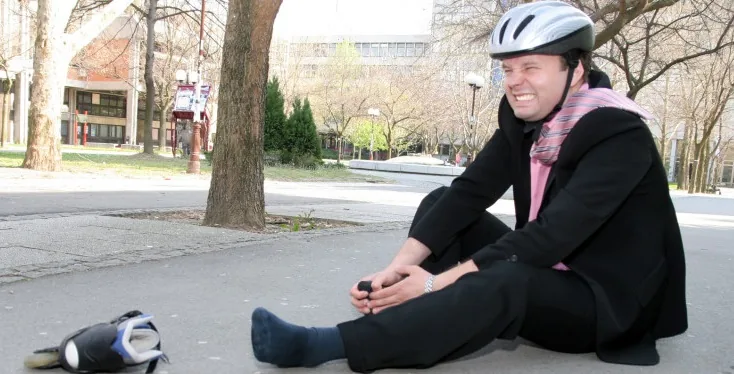What are the Symptoms of Reflex Sympathetic Dystrophy?
I’m Ed Smith, a Sacramento Personal Injury Lawyer. Everyone who has Reflex Sympathetic Dystrophy, also known as RSD, has a slightly different set of symptoms. Some patients have severe symptoms while others may only have symptoms intermittently. Understanding the symptom progression will help patients identify problems earlier, leading to earlier diagnosis and treatment with better outcomes.
Stage 1: Acute
Stage one is called the acute phase and often follows a triggering event. Examples include auto accidents and pedestrian accidents that involve bone fractures or other traumatic injuries. This generally lasts on the order of three to six months and has a variety of symptoms. These symptoms include:
- Burning: Patients generally describe the pain as a burning sensation in their hands and feet, often following extremity trauma.
- Flushing: Flushing refers to the patient’s affected extremities turning a red color.
- Blanching: If patients stretch the areas of skin that have become “flushed” with blood, the skin should turn a white color. This is called blanching.
- Sweating: Many patients with RSD in the early phases complain of significant sweating.
- Swelling: Also called edema, many patients complain of swelling in their extremities.
- Pain: Patients report pain in their extremities; however, the pain can spread. Some patients have chronic pain.
Stage 2: Dystrophic
Stage two is called the dystrophic phase. The name comes from a dystrophy of the patient’s skin, chiefly over their extremities. These symptoms tend to last on the order of months. Symptoms of this stage include:
- Decrease in Swelling: The swelling from the first phase starts to diminish over time.
- Drop in Flushing: The red coloration from the first phase, called flushing, tends to dissipate with this phase.
- Skin Changes: One of the worst comorbidities, there are a variety of changes of the skin that patients may start to notice. Some patients report that their skin starts to appear shiny under the sun. Other patients state that their skin starts to feel thick. As the stage progresses, these symptoms will worsen.
- Persistent Pain: The pain from the first phase persists. Patients report their type and severity of pain across a wide spectrum.
Stage 3: Atrophic
The last stage may last for life and is called the atrophic phase due to the atrophy patients experience in the function of their extremities. Patients often complain of a loss of motion in their extremities. In addition, patients may report contractures. These are tight areas of skin that prevent the patient from extending their extremities completely. Many patients will report that they have lost a significant amount of body mass from under their extremities. Medical imaging tests such as x-rays and MRI scans frequently show early-onset osteoporosis with RSD.
Contact an Experienced Personal Injury Lawyer
I’m Ed Smith, a Sacramento Personal Injury Lawyer. The symptom progression of Reflex Sympathetic Dystrophy is different for every patient; however, understanding the stages is vital. If you or a loved one is suffering from RSD, please call me at (916) 921-6400 for friendly, free advice. Patients who are calling from outside of the local Sacramento area may want to use my toll-free number at (800) 404-5400.
I am proud to be a Million Dollar Advocate in the state of California.
Some of my verdicts and settlements can be viewed here.
A vast selection of client reviews may be inspected on Avvo, Yelp, and Google.
:dr bw cv

